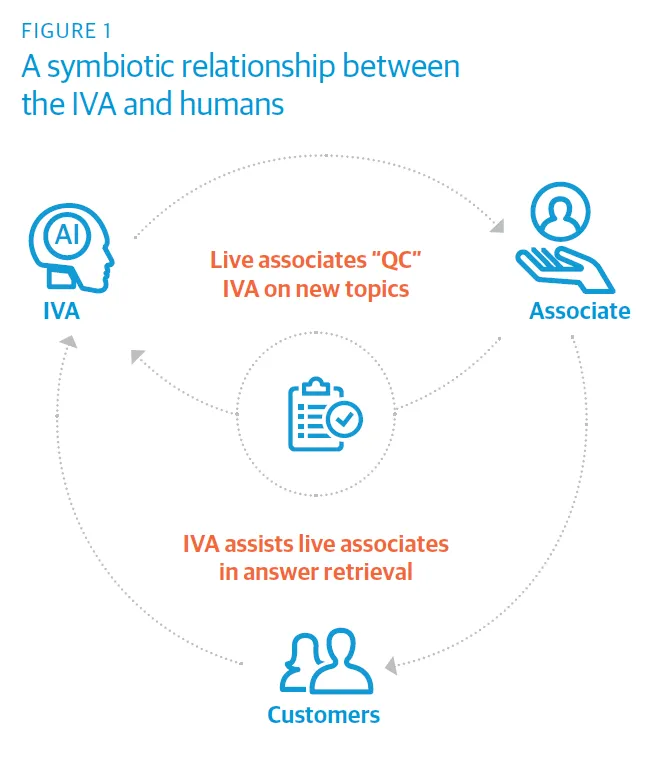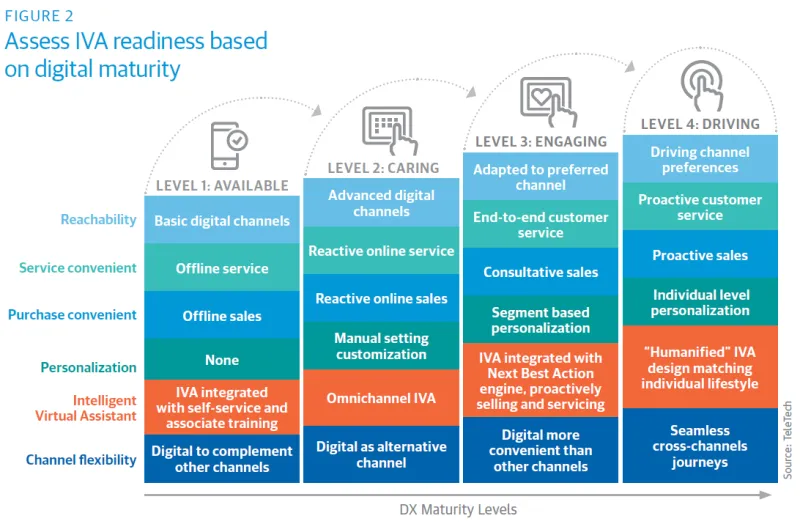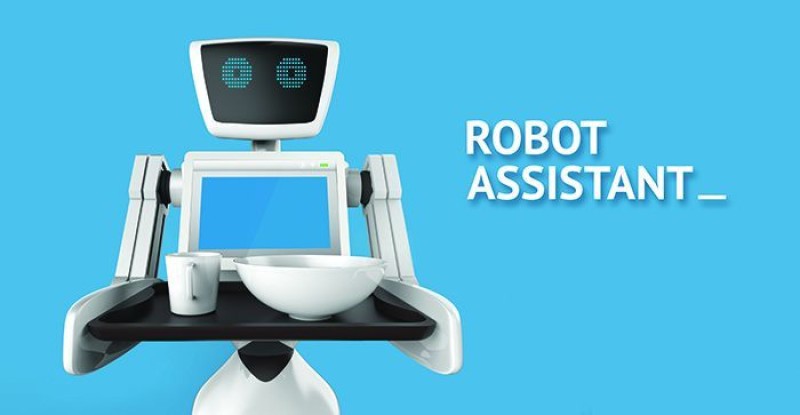Customers expect brands to engage with them in their channel of choice, at the time of their choosing, and to resolve their issues or answer their questions quickly. The combination of increasing contact center wages, driven by low unemployment rates, and shrinking or flat corporate budgets, is putting unprecedented strain on companies to meet customer expectations at scale.
Enter automation. Chatbots, automated service interactions, AI, and machine learning applications all fall under the collective “Bots” moniker and promise more than $8 billion per year in savings by 2022, according to Juniper Research.
Savings come primarily from call deflection: Bots will be able to handle 30 to 70 percent of all interactions, depending on the industry, allowing for both associate reduction and the ability to scale without adding more people. Many Bots will be simple automated transactions, while advanced Bots will serve as intelligent virtual assistants (IVAs), getting smarter over time through AI or machine learning. In addition, the IVA will be able to improve human associate effectiveness by both assisting with training and aiding employees in their responses to customer inquiries they field, resulting in efficiencies in both training budgets and improved operational metrics.
Beyond cost savings, companies are looking to benefit from increased sales through AI implementations as IVAs proactively recommend the optimal products and services for each customer and qualify sales leads for human follow-up, boosting sales with minimal human effort.
Finally, if implemented properly, IVAs can improve the overall customer experience by offering 24/7 service availability without the need to hire more associates, providing consistent optimal responses across channels, and enabling an omnichannel support presence from websites and apps to call centers and email applications.

Improvements in technology and willingness of customers to engage with IVAs/Bots is accelerating adoption. With 31 percent of all retailers planning to invest in chatbots in the coming year, the global chatbot market is expected to reach $1.23 billion by 2025, a compounded annual growth rate (CAGR) of 24 percent, according to Grand View Research. Gartner forecasts that by 2020 customers will manage 85 percent of their business relationships without interacting with a human, and McKinsey forecasts that IVA labor force productivity will equal the output of up to 140 million FTE workers by 2025.
Customers are more willing than ever before to interact with Bots, as long as the interaction ends favorably. A study from LivePerson found that 33 percent of consumers rated a positive perception of chatbots, and 48 percent were indifferent as long as their issue was resolved.
The question for today’s executives is not whether to use IVAs/Bots, but rather how to design and deploy them most effectively and efficiently.
Not all Bots are created equal
Chances are you encounter an AI, Bot, or IVA implementation on at least a weekly basis. From Amazon and Netflix recommendations to myriad experiments on the likes of Facebook Messenger, to our personal assistants in the form of Siri, Alexa, or Google Home, most of us vacillate between excitement at the novelty and possibilities, and frustration over the shortcomings in many of today’s implementations.
Realizing the benefits of IVAs requires the right design and implementation approach. Most customer-facing Bots today are highly scripted and limited in their ability. The vast majority only understand and respond to simple requests, such as a lost password or FAQ search. Most people don’t know how to phrase simple requests, or break down their request into a number of simple steps that the Bot can understand.
This leads to a frustrating customer experience when the customer goes “off script” that ultimately requires customers to call or chat with a human associate to resolve their issue. Adding to the frustration, most Bots do not enable a seamless transfer to customer care—only providing a number to call or a link to chat, at which time the customer has to begin all over again.
Avoiding these pitfalls means creating a truly hybrid workforce in which the smart IVA simplifies the experience and the human associate engages with customers on higher-value interactions.
Rather than standing up multiple, highly scripted single- use-case Bots, we recommend building a Digital Worker Factory in which we train a single IVA to handle multiple-use cases, and integrate that IVA into multiple channels for a single, consistent, omnichannel experience. While this approach takes a bit longer to stand up with a higher initial investment, over the long run it is more cost effective by making it easier to stand up incremental use cases and plug into multiple channels.
A true IVA, born from a Digital Worker Factory, generates personalized responses by combining analytics and cognitive computing based on individual customer information, past conversations, and location, leveraging the corporate knowledgebase and human insight. It must be able to:
- Listen to text and voice.
- Understand customer inquiries (i.e., the customer’s intent, regardless of how they ask a question) and sentiment across all use cases.
- Know when to escalate to a human associate, and be able to seamlessly transfer the customer.
- Remember what it has learned to optimize the experience over time.
The Digital Worker Factory is akin to the modern assembly line. Processes are repeatable and streamlined through the IVA. Once created, new use cases can be added much more easily than deploying many individual “dumb” Bots that don’t connect with one another.
A Digital Worker Factory sets up companies for long-term flexibility and scalability as they grow, taking advantage of the best that both Bots and humans can offer to create value-added support and sales interactions.
The Digital Worker Factory comprises three platforms, which together enable an IVA to provide advanced levels of CX delivery:
Enablement platform: Comprises the tech stack in which the IVA is coded and integrated with a company’s customer touchpoints. The technology includes: natural language tools like IBM’s Watson, sentiment analysis, answer inference, machine learning data store, knowledgebase, and integration with CRM, ERP, and other systems.
Training platform: The Training Platform is what makes a true IVA versus a dumb Bot. It includes knowledge engineering and training protocols to decompose knowledge from knowledgebase content, call and chat logs, and associate feedback, creating a performance feedback loop.
Human platform: The Human Platform enables a seamless transfer from the IVA to human associate ideally within same chat window, and uses human insight to train the IVA.
The hybrid workforce
Our IVA implementation approach is based on a symbiotic relationship between the IVA and human associates (see Figure 1). Once the IVA is trained, we release it to ride alongside employees who assess the IVA’s response to customer queries and either pass it directly on to the customer or modify it, which in turn is fed back into the training platform to help tune the IVA’s responses. (Only after the IVA is proven during interactions with human associates should it be released for direct interaction with customers.)

Are you ready for an IVA?
A company’s digital customer experience maturity helps determine its readiness for an IVA (see Figure 2), as well as the type of customer interactions the company has and processes and systems currently in place.
Engage cross-functional leadership to determine primary goals and objectives of the IVA. Start small by identifying a handful of use cases that will provide the greatest return and scale your factory over time. Identify process optimization opportunities prior to implementation so that you are not automating a poor, inefficient experience. And finally, engage experts as needed to advise you along the way so that your IVA endeavors do not result in “IVA jail”-like customer experiences.
Conclusion
IVAs must be considered as part of an organizational strategy, which includes reimagining the role of human associates in a hybrid workforce model. A Digital Worker Factory puts the infrastructure in place for companies to realize the many benefits of IVAs/Bots.















